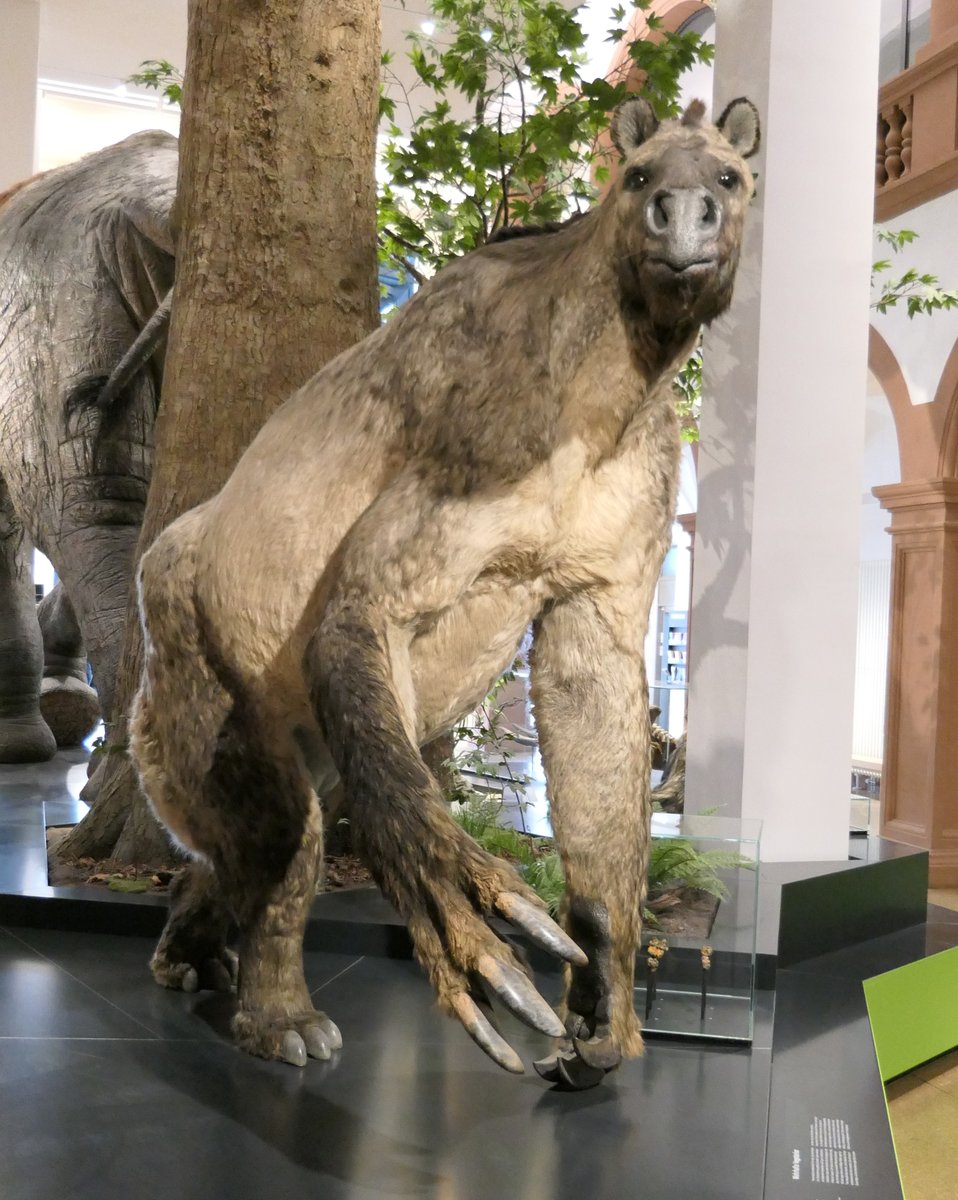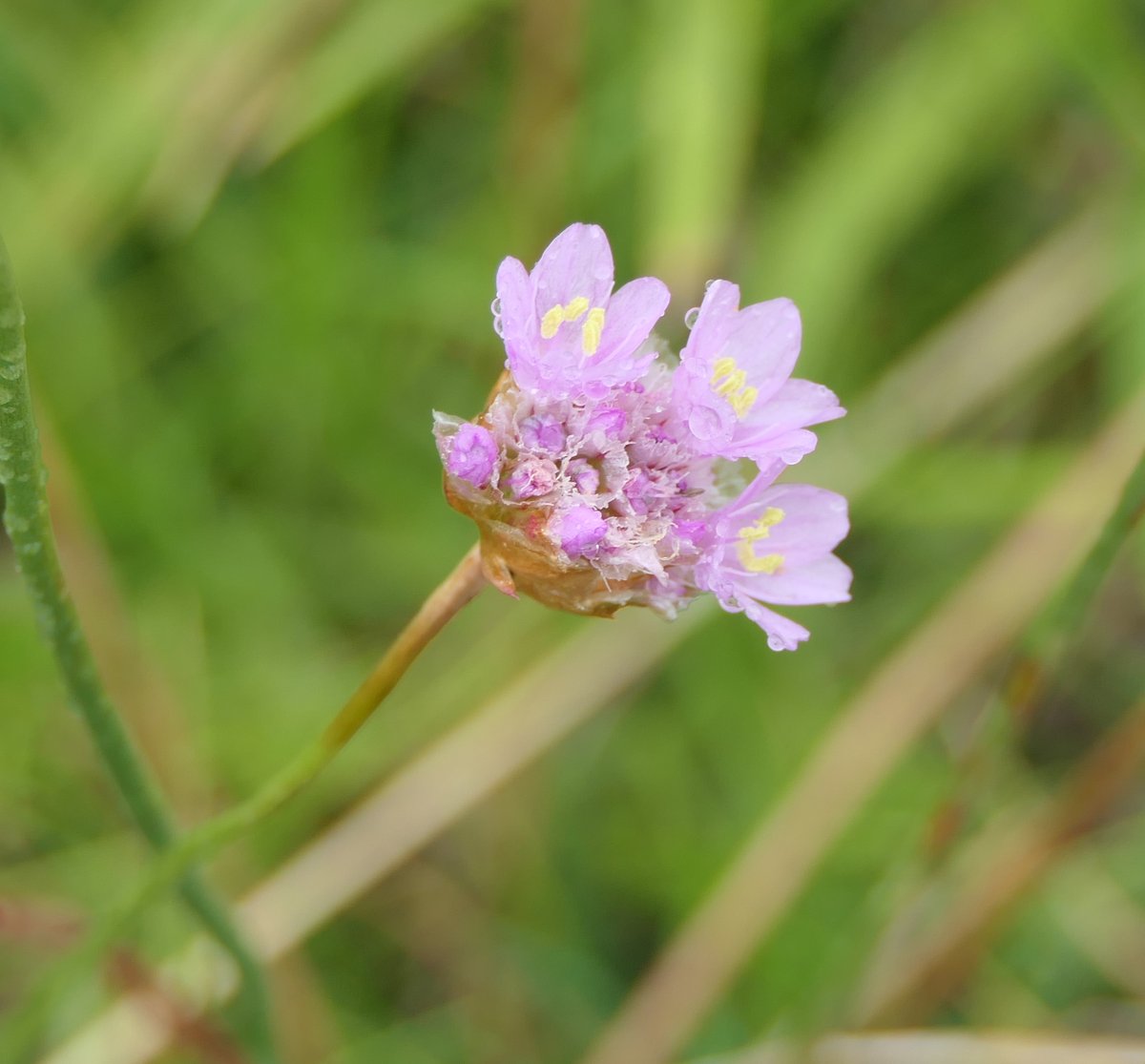I was at the natural history museum in Mogontiacum (Mainz) today and they have some amazingly lifelike reconstructions of extinct species, a thread
This might interest @TetZoo @ausar_the @MarkusBhler10)
The biggest piece is an awesome Deinotherium giganteum (1/17)


This might interest @TetZoo @ausar_the @MarkusBhler10)
The biggest piece is an awesome Deinotherium giganteum (1/17)


To really grasp the quality, compare that to the already great one from the Natural History Museum in Ηράκλειο, Crete and the decent smaller D. bavaricum one that was at the Löwentor Museum in Stuttgart before being replaced by Gomphotheres (2/n)






Mainz also has smaller elephants in the shape of the Sicilian Dwarf elephant Palaeoloxodon falconeri (3/n)




Ah, you know what, my Proboscidian folder is open anyhow, I'll add some other ancient elephants from other museums to the thread. These are the already mentioned gomphotheres now seen in Stuttgart (4/n)






Life sized Moeritherium from the NHM London and from the elephant exhibition in the Kassel Ottoneum in 2023 (5/n)








Palaeoloxodon antiquus in the Reiss Eneglhorn Museum in Mannheim is absolutely amazing, Platybelodon was at the elephant exhibition in Kassel again (6/n)




Again from the Kassel exibition their awesome Mammuthus primigenius - they already had a nice one in their permanent exhibition. The third is from the "Eiszeitsafari" exhibition at REM Mannheim (7/n)






The elephant exhibition in Kassel also had a range of smaller models, here modern Indian elephant Elephas maximus and African elephant Loxodonta africana; Mammuthus columbi and Palaeoloxodon falconeri; Moeritherium und Deinotherium (8/n)






More small proboscidean models from Kassel:
Phomia and mammut (mastodon); Platybelodon and Gomphotherium; Stegodon and Stegotetrabelodon (9/n)



Phomia and mammut (mastodon); Platybelodon and Gomphotherium; Stegodon and Stegotetrabelodon (9/n)



Okay, let's get back to Mainz. Here is their absolutely stunning Chalicotherium goldfussi and for comparison I throw in the quite nice ones from the museum in Basel (10/n)








They also have a "bear dog" Agnotherium antiquum - again I add a comparison in the shape of Amphicyon steinheimensis chasing Dorcatherium sp. from the Löwentor in Stuttgart (11/n)






Mainz also has a water buffalo Bubalus murrensis reconstructed from a dermoplastic of an actual present day water buffalo with reconstructed murrensis horns! (12/n)




And since the Eiszeitsafari at the REM Mannheim had some amazing bovines too, let me add their Bos bonasus, Bos promigenius and Bos priscus and for the cervid fans Megaloceros giganteus - those really brought ice age ungulates to life! (13/n)








Back to Mainz, they have a very, very nice Wooly rhino Coelodonta antiquitatis, of course the REM Eiszeitsafari also had one and the ice age exhibit at the SMNK Karlsruhe in 2018 even had Coelodonta antiquitatis and Stephanorhinus kirchbergensis (14/n)








Last mammal from Mainz is this wonderful sea cow (no species given) - the only other one I have is Anomotherium langewieschei from the Ottoneum Kassel (15/n)




Last tetrapod from Mainz is this adorable Sclerocephalus haeuseri - for compariosn the one from Löwentor Stuttgart (16/n)






Okay, so much for now. They also have a wonderful Laurussian cost diorama with fishes, invertebrates and plants, if you're interested, I'll make another thread.
And if you get a chance to visit any of the museums mentioned, do it! They all are very much worth a visit! (end)
And if you get a chance to visit any of the museums mentioned, do it! They all are very much worth a visit! (end)
Please follow @_quagga who did a lot of these amazing sculpts and so many more: quagga.cat/recreacions/
• • •
Missing some Tweet in this thread? You can try to
force a refresh

























































